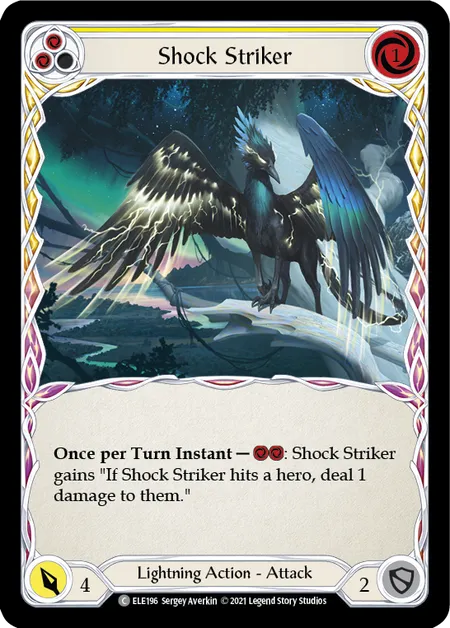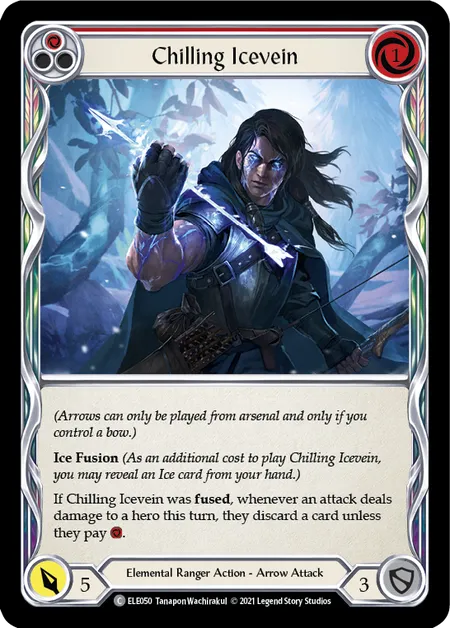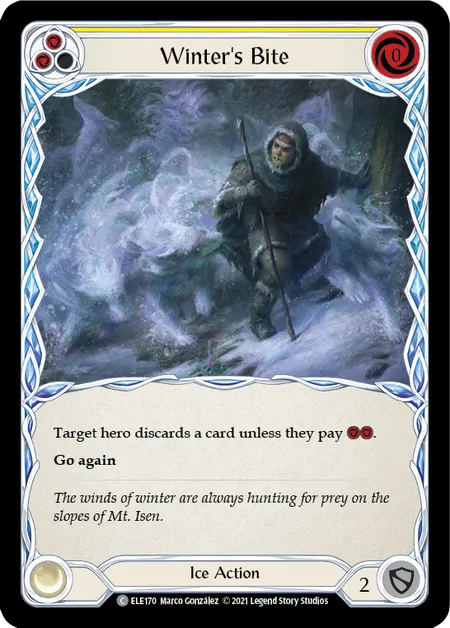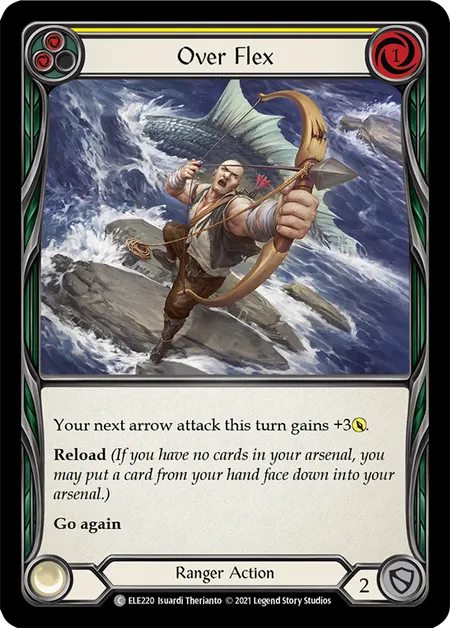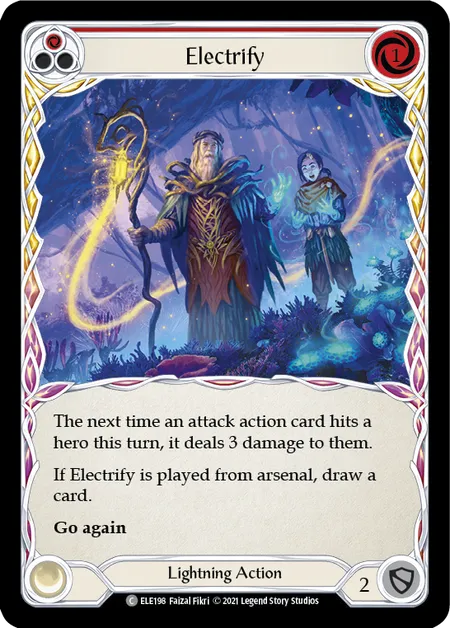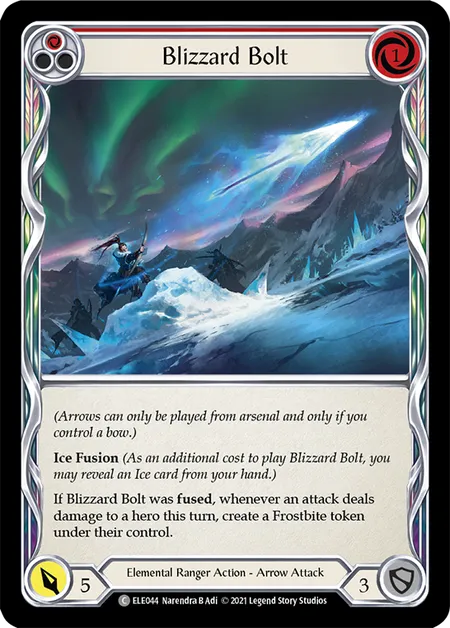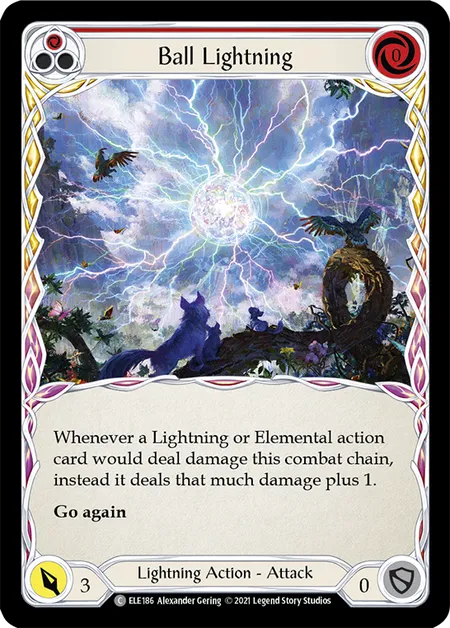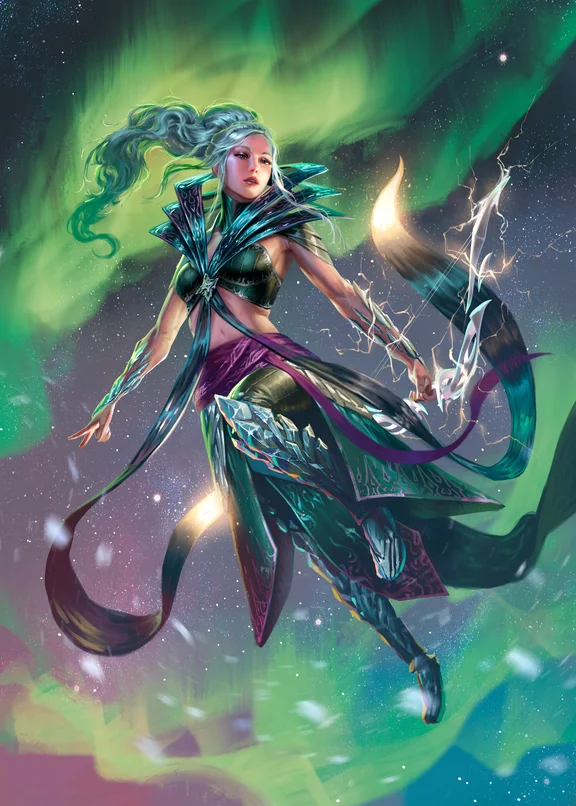
In this article I will outline the easiest way to get into drafting Lexi and some easy ballpark numbers for fuse cards, pitch values and attack to non-attack ratios to get you started. Lexi is an extremely fun hero to draft because of the multitude of strategies you can go for. This guide is meant as a starting point on your Lexi draft journey. Focusing purely on Lightning or Ice talent can streamline your drafting process and give you a consistent and playable deck, while drafting a hybrid Ice and Lightning deck requires a bit more understanding of how Lexi works, but can be very powerful. Here are some of the most common archetypes.
Lightning Based Aggro
The name of the game with this strategy is to deal as much damage as possible through punishing on-hit effects. Stacking the damage multipliers on cards like Frazzle and Ball Lightning encourages you to go as wide as possible, attacking multiple times and either forcing defence or dealing big chunks of damage. Cards like Buzz Bolt and Shock Striker serve as great damage enablers that synergise with Frazzle and Ball Lightning. Some great early picks for this strategy are cards like Mark of Lightning, Electrify, red and yellow Frazzle and Ball Lighting. Remember, if you pick Lightning cards early, you’re leaving yourself open to change to Briar as well!
Some of the Tier 1 draft picks (1-5 picks): Frazzle, Ball Lightning, Mark of Lightning, Electrify
Some of the Tier 2 draft picks (6-10 picks): Buzz Bolt, Heaven’s Claws, Shock Striker, Dazzling Crescendo
Ice Based Disruption & Control
Unlike the above strategy, you will want to go tall if you decide to go for an Ice based strategy - this means run cards that increase the damage of an attack and swing big once a turn, rather than multiple times a turn. On the Ice side, taxing non-attack actions like Winter’s Bite and Ice Quake are great, because they’re easy to play out from arsenal and some taxing attacks like Icy Encounter and Frostfang are the bread and butter of this archetype. For arrows, Chilling Icevein and Blizzard Bolt give you those powerful on-hits that will disrupt your opponent and are premium picks. For powering up your attacks, I recommend Over Flex and Invigorate. These are a great way to create those go-tall attacks, as well as setting up a huge late game dominate attack if you pitch stack them correctly. The equipment I like to pick for this strategy is Coat of Frost and Honing Hood.
Some of the Tier 1 draft picks (1-5 picks): Chilling Icevein, Ice Quake, Winter’s Bite, Blizzard Bolt
Some of the Tier 2 draft picks (6-10 picks): Over Flex, Icy Encounter, Honing Hood, Flake Out
Ice & Lightning Hybrid
Combining the tools from both worlds gives you the most power, but can be inconsistent. This is why I recommend attempting a hybrid build only if you have played Lexi a few times or already attempted the previous archetypes with success. Ice and Lightning synergise by disrupting your opponent as you pressure them with Lightning. Ice on its own struggles to fire off multiple attacks, but Lightning helps to achieve that.
Imagine this scenario, you flip over an Electrify red, giving your attack go again. You play it out and draw a card. Then, you load up a Blizzard bolt with +1, shoot it and fuse it. That’s 6 damage with another 3 damage and two Frostbites on hit, and you’re still threatening more attacks. The hybrid builds are great at putting your opponent in tricky situations like this and because of the sheer amount of cards you have access to, there are lots of ways to build it. Hybrid builds don’t necessarily mean a 50-50 split, you can run one Element with a splash of the other - giving you lots of options on how you want to steer the draft.
Some of the Tier 1 draft picks (1-5 picks): Electrify, Polar Blast, Ball Lightning, Chilling Icevein
Some of the Tier 2 draft picks (6-10 picks): Over Flex, Shock Striker, Frazzle, Dazzling Crescendo
Sorting Out Your Pitch
A great rule of thumb I like to use is in a 30 card deck is an even split of reds and non-red pitch cards - 15 reds and 15 yellows and blues. The thing to be mindful of for the blue to yellow ratio is the amount of cards that cost 0 and amount of cards that cost 1. If a lot of your arrows and attack actions cost 0, you can get away with running more yellows, as you’ll pitch it to a 1 cost attack, red Heaven’s Claw with go again for example, then you’ll still be able to use Shiver and fire off an arrow that costs 0. If you find yourself running cards that mainly cost 1, I would strongly advise to run more blues. Returning to my rule of thumb, a safe number for most cases is 15 reds, 5 yellows and 10 blues.
Attacks to Non-Attacks Ratio
Lexi is an interesting Ranger because you don’t actually want too many arrows. Imagine a Lexi deck with 30 arrows. You wouldn’t be able to fuse as not one arrow from Tales of Aria is Ice or Lightning. Additionally, you wouldn’t be able to do anything other than shoot one vanilla arrow per turn. Element cards such as Lightning and Ice are a key component of the deck and non-attack action cards are useful as well. This is why my rule of thumb for this ratio is at least 10 good arrows, 10 non-arrow attacks and 10 non-attack action cards. On top of that, the number of Element cards I want out of those non-arrow cards is around 10-15, just to make it easier to fuse. When drafting, keep these ratios in mind when reviewing your cards between packs and make sure to pick up those key Lightning and Ice Element cards early.
Although it can be hard to keep track of the pitch ratios, arrow to non-arrow ratios and Element to non-element ratios as you draft, you can simplify it by combining the ratios with the pitch as well. Simply focus on picking red pitch arrows and yellow or blue pitch Lightning and Ice Element cards. As you continue to draft Tales of Aria, knowing these ratios and intricacies will become second nature, giving you more brainpower to focus on particular strategies. These interactions are what keep the Tales of Aria draft format incredibly fun and constantly challenging, making it one of the most enjoyable draft formats yet. Remember, it is only as hard as you make it. If you keep it simple early, you will pick up more advanced strategies later on and dominate the field in no time.
Upcoming Events
Don't miss the opportunity to play in our premiere events coming up later this year!



